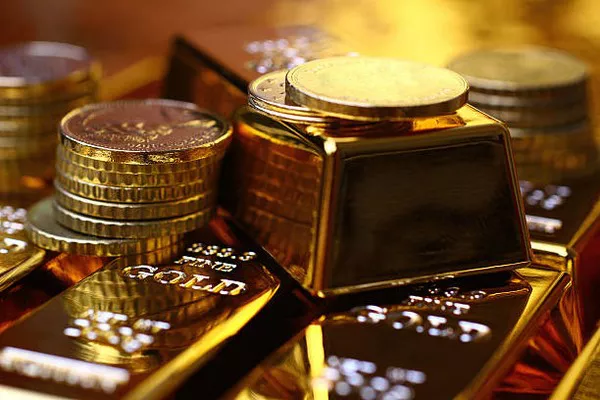Gold has long been revered as a hedge against economic uncertainty and inflation. Historically, during periods of rising inflation, investors have turned to gold as a store of value due to its intrinsic properties—limited supply, durability, and universal desirability. Unlike fiat currencies, which can be subject to devaluation during inflationary cycles, gold is considered a tangible asset that tends to retain its worth over time. This makes it an attractive diversification tool for portfolios seeking stability in turbulent economic times.
During episodes of high inflation, such as the 1970s, gold experienced significant price appreciation, demonstrating its role as a safe haven against eroding purchasing power. Understanding why gold prices behave the way they do during inflation requires an exploration of fundamental economic principles.
Economic Principles
Gold prices are typically influenced by changes in inflation expectations and interest rates. When inflation rises, the purchasing power of fiat currencies declines, driving investors towards assets like gold that are perceived to hold their value. The relationship between gold and inflation is complex and multifaceted. Gold is seen as a non-yielding asset, and when inflation erodes bond yields, gold becomes relatively more attractive.
Moreover, gold is often viewed as a currency in itself, and its price tends to move inversely with changes in real interest rates. When interest rates are low or negative (adjusted for inflation), the opportunity cost of holding gold diminishes, making it more appealing to investors seeking to preserve wealth.
Current Economic Environment
In recent times, global inflation rates have surged amid supply chain disruptions, rising energy costs, and robust consumer demand. Central banks in many economies have responded with accommodative monetary policies, maintaining low-interest rates and expansive asset purchase programs. The U.S. Federal Reserve, in particular, has signaled a shift towards tighter monetary policy to combat inflation, including multiple interest rate hikes.
The macroeconomic backdrop of rising inflation and evolving monetary policies has influenced investor sentiment towards gold. The interplay between these factors provides valuable insights into the current trajectory of gold prices.
Factors Affecting Gold Prices
Several factors are currently influencing the price of gold. The strength of the U.S. dollar, for instance, often exerts considerable pressure on gold prices. A stronger dollar typically makes gold more expensive for investors holding other currencies, leading to reduced demand and lower prices.
Additionally, interest rate hikes by central banks can impact gold prices. Rising rates increase the opportunity cost of holding non-interest-bearing assets like gold, making alternative investments more appealing.
Government policies, particularly related to fiscal stimulus and trade, also play a role. Changes in regulations or geopolitical tensions can spur demand for gold as a safe-haven asset.
Market Sentiment and Speculation
Market sentiment and speculative activities can cause significant fluctuations in gold prices, independent of fundamental economic indicators. Periods of heightened uncertainty or volatility often lead to increased speculative trading in gold futures and options markets, impacting short-term price movements.
Sentiment among institutional investors and retail traders can shift rapidly based on economic data releases, geopolitical events, or unexpected shifts in monetary policy, underscoring the importance of monitoring market sentiment alongside economic fundamentals.
Comparison with Other Assets
Comparing gold’s performance with other assets during inflationary periods provides valuable insights for investors. Historically, gold has demonstrated resilience during high inflation compared to equities and bonds. While equities can also serve as a hedge against inflation due to their real asset exposure, gold’s price behavior often exhibits lower correlation to traditional financial assets during turbulent economic times.
Real estate and commodities like oil and agricultural products can also be influenced by inflation, but gold’s unique attributes as a portable, liquid, and globally recognized store of value distinguish it from other asset classes.
Expert Opinions
Financial experts and market analysts offer diverse perspectives on gold’s future outlook amid rising inflation. Some believe that gold remains an essential component of a diversified portfolio, providing stability and insurance against economic uncertainty. Others argue that technological advancements and evolving investment strategies may diminish gold’s appeal over time.
Opinions vary on the sustainability of current inflation levels and the implications for gold prices. Market sentiment is heavily influenced by expert forecasts, making it crucial for investors to stay informed and adapt their strategies accordingly.
Investment Strategies
For investors considering gold in their portfolios during inflationary phases, several strategies can be employed. Dollar-cost averaging allows investors to accumulate gold over time, mitigating the impact of short-term price fluctuations. Gold exchange-traded funds (ETFs) provide exposure to gold prices without the complexities of physical ownership, offering liquidity and convenience.
Combining gold with other inflation-hedging assets like real estate or inflation-protected securities can enhance portfolio resilience against economic headwinds. It’s essential to tailor investment strategies based on individual risk tolerance, time horizon, and financial goals.
See Also Disadvantages of Gold ETFs: All You Need to Know
Conclusion
In conclusion, gold’s price dynamics during periods of rising inflation are influenced by a combination of economic principles, market sentiment, and geopolitical factors. While gold remains a popular hedge against inflation, its performance can be volatile due to changing macroeconomic conditions and investor behavior.
The current economic environment, characterized by elevated inflation rates and evolving monetary policies, underscores the importance of diversified investment strategies. Investors should assess their risk appetite and long-term objectives when incorporating gold into their portfolios, considering its role as a potential store of value amid ongoing economic uncertainties. By staying informed and adapting to changing market dynamics, investors can navigate inflationary environments while leveraging the unique properties of gold as a strategic asset allocation.


